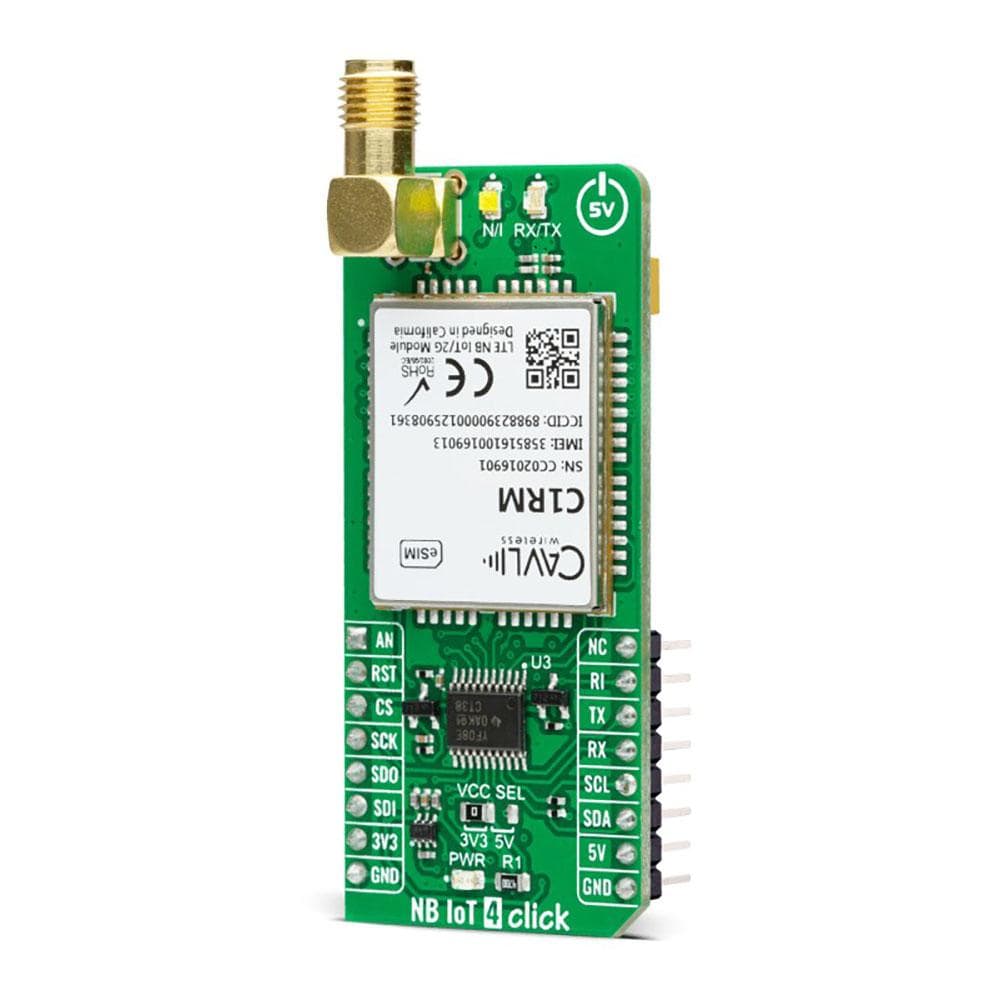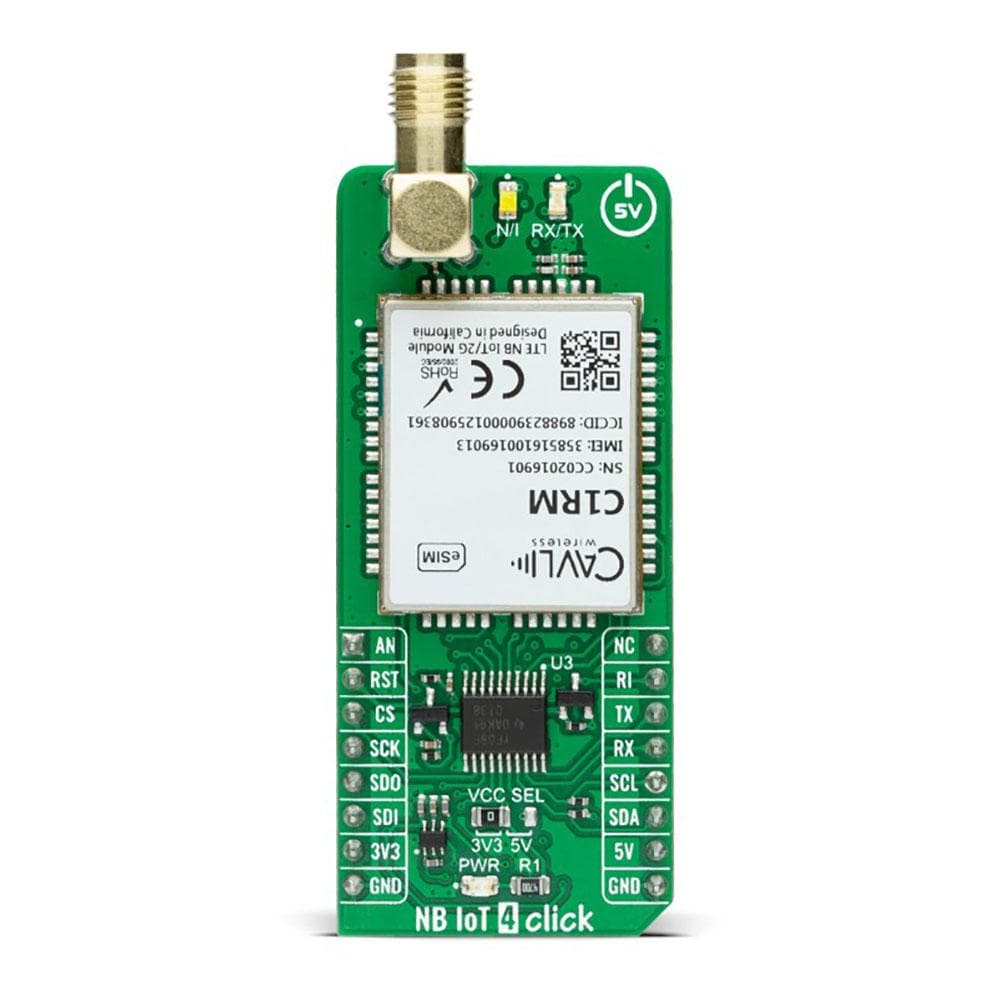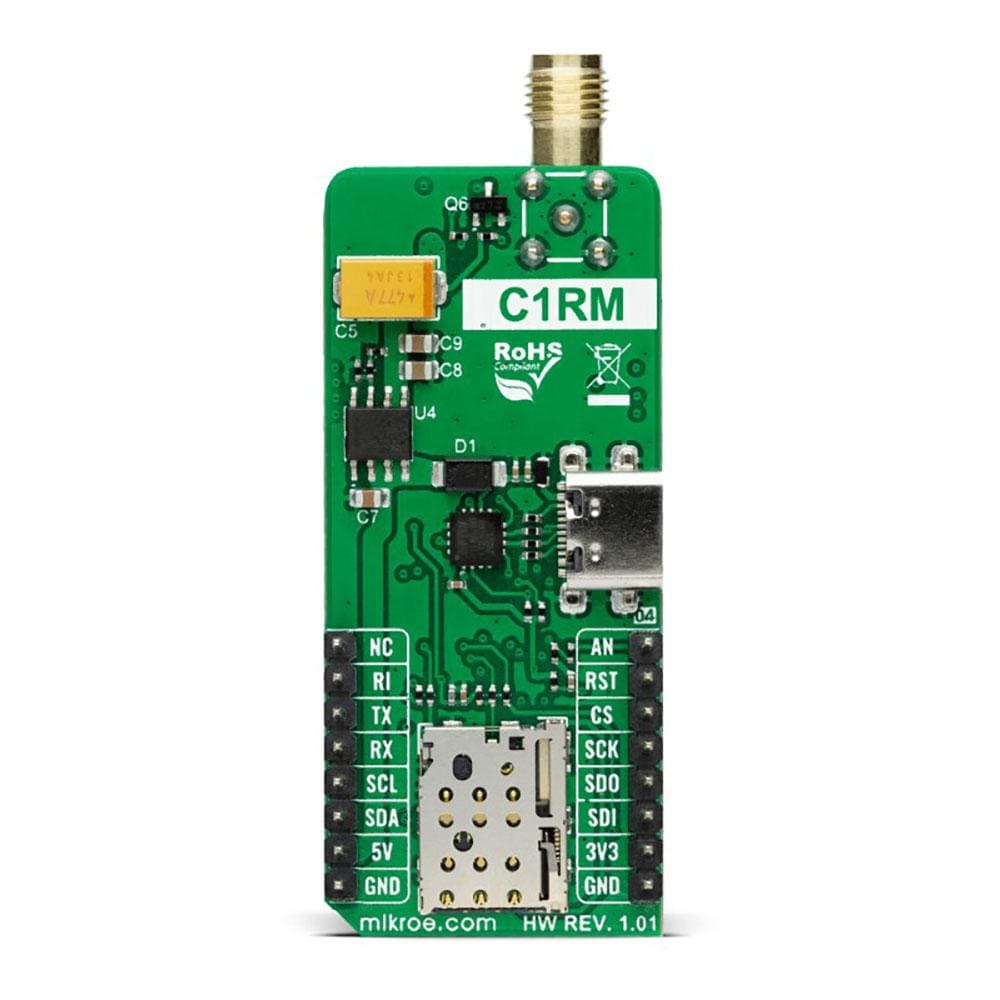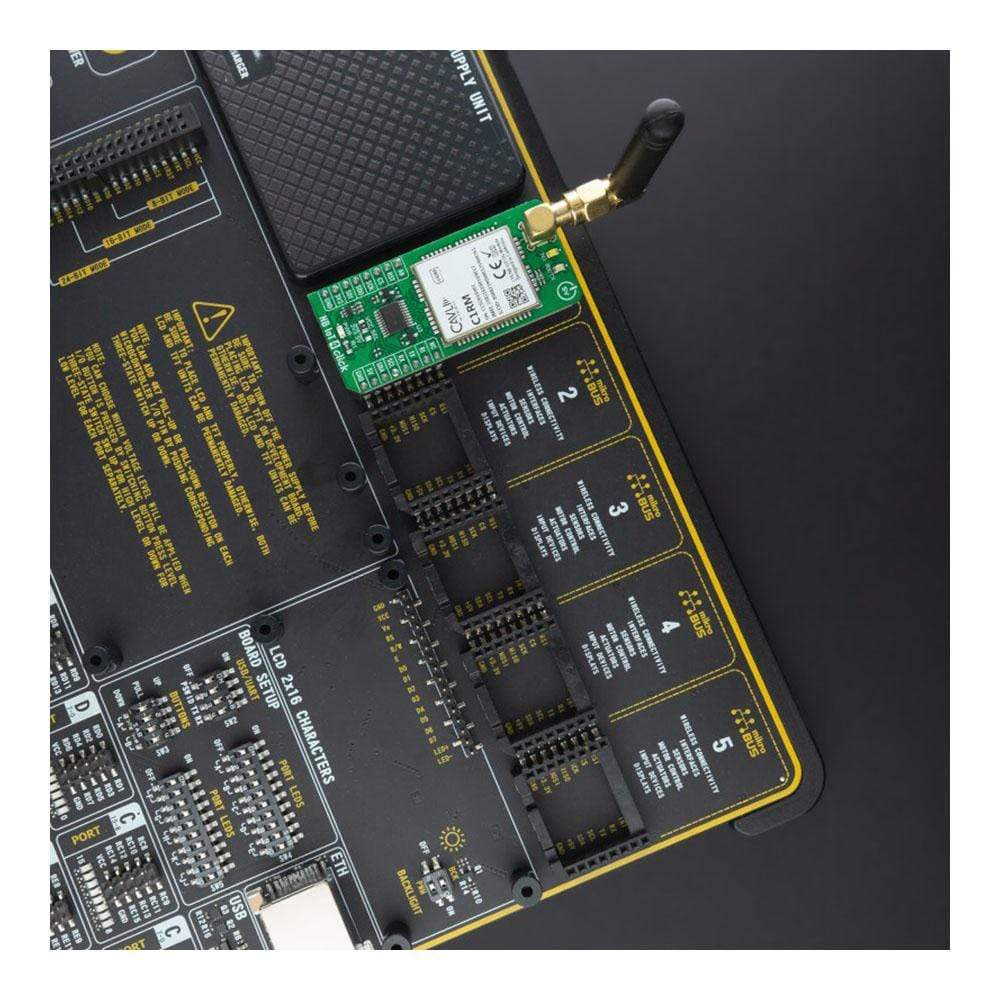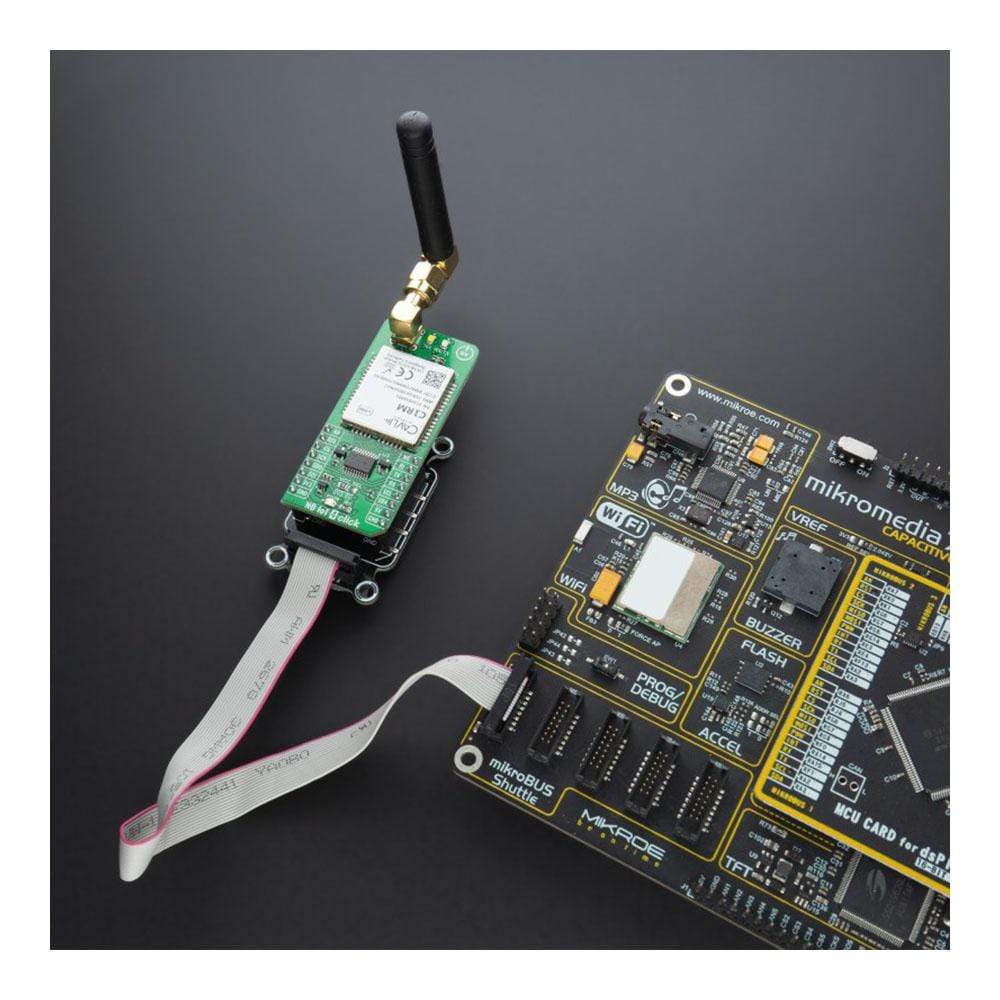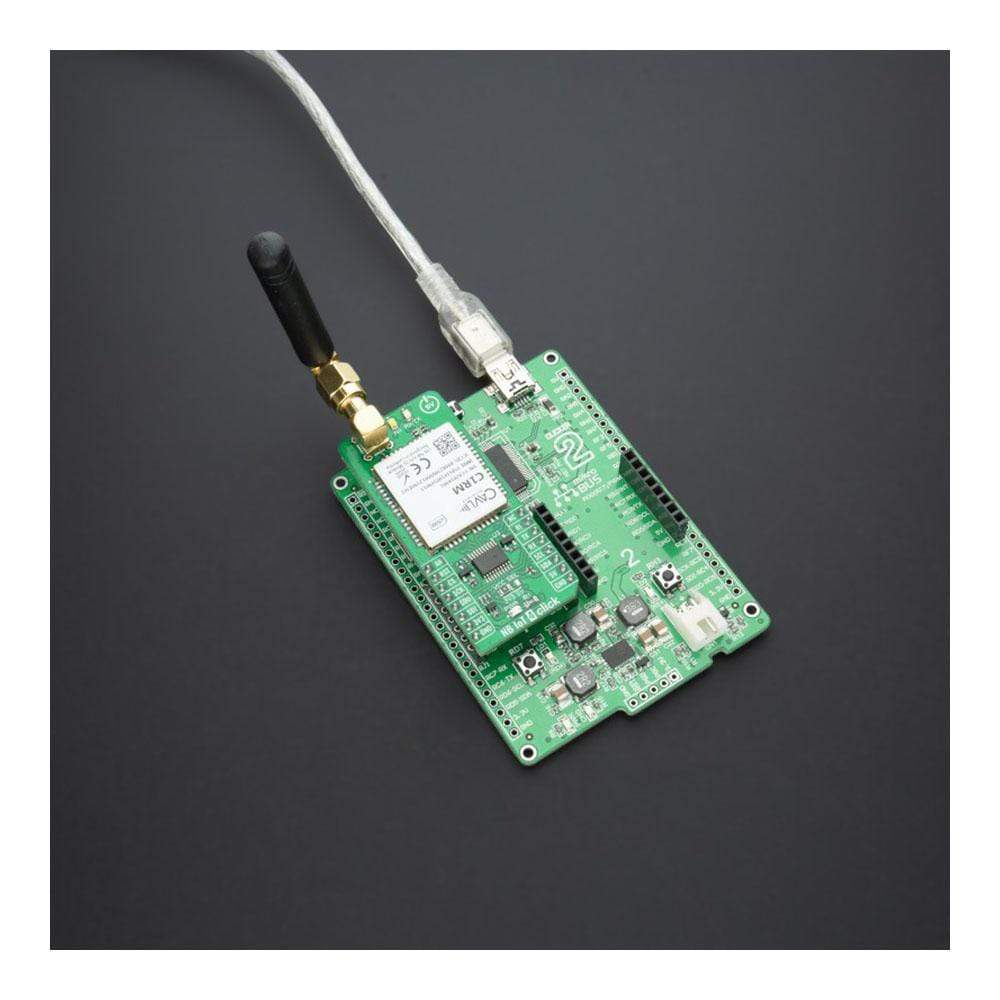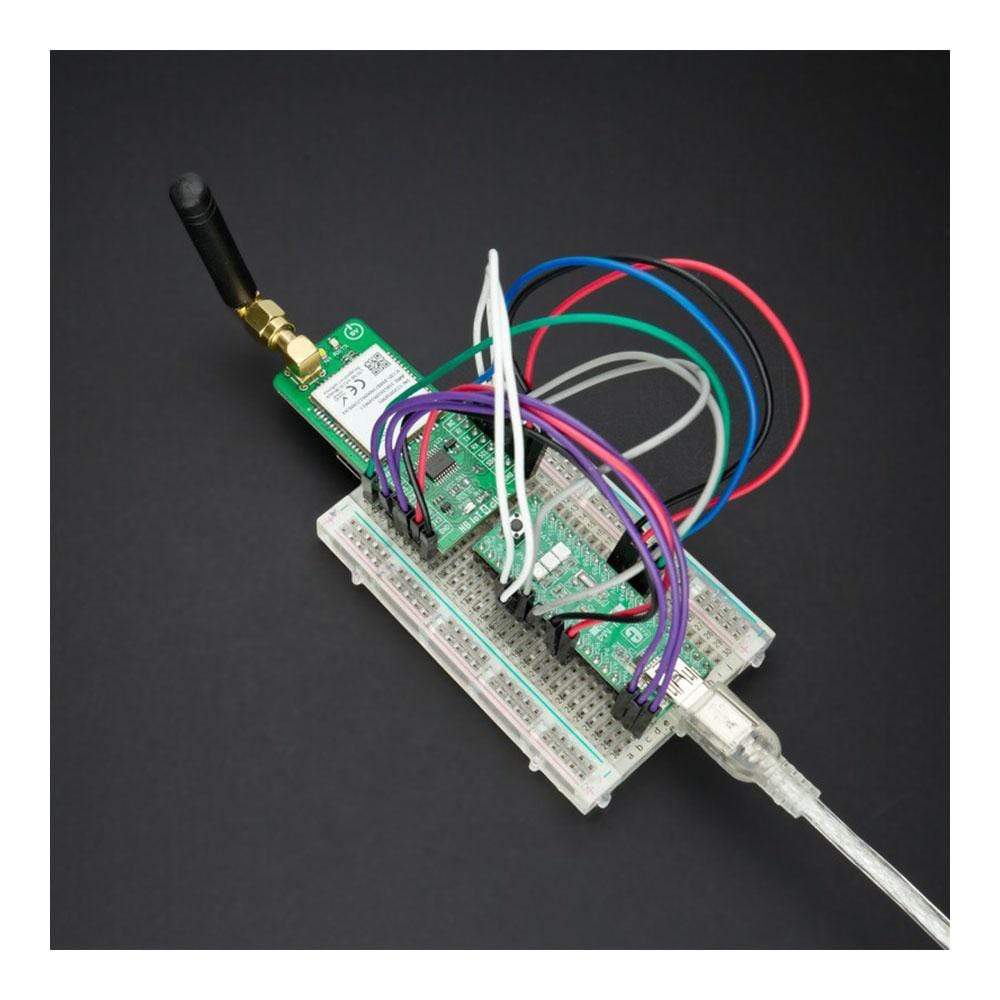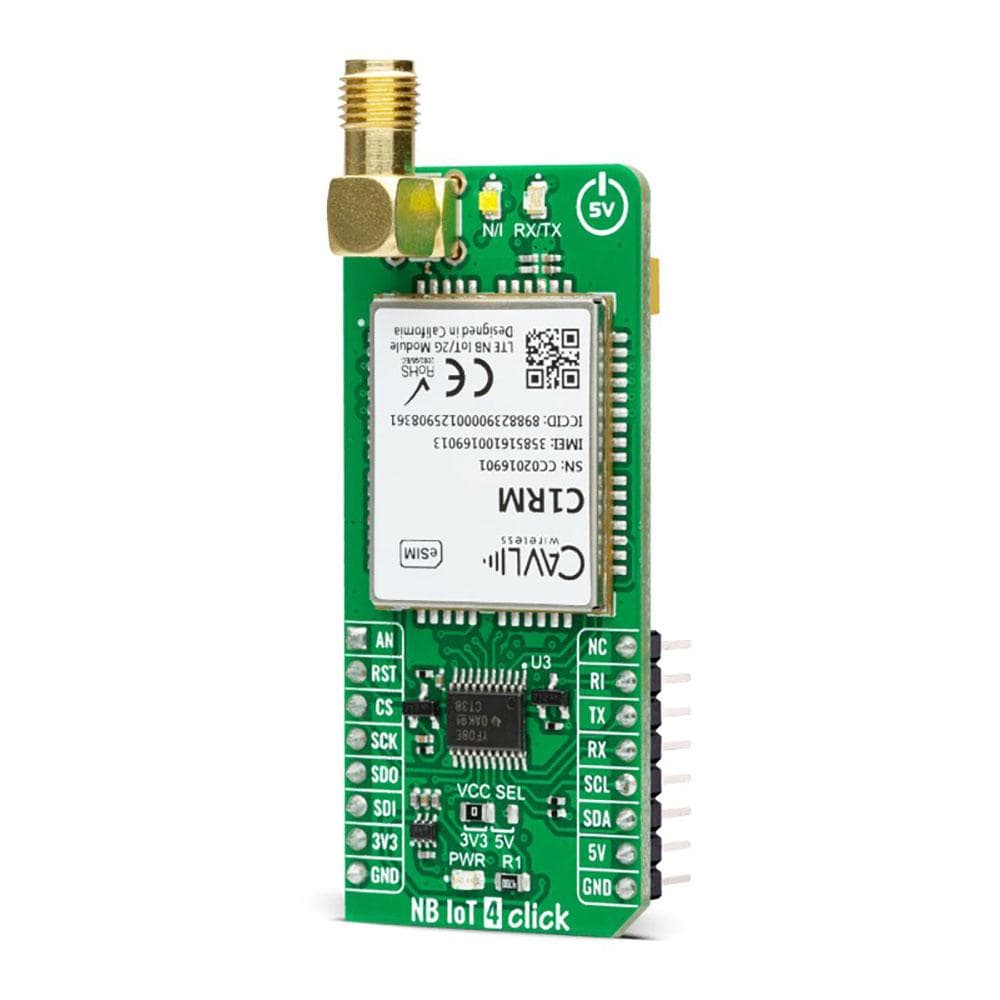
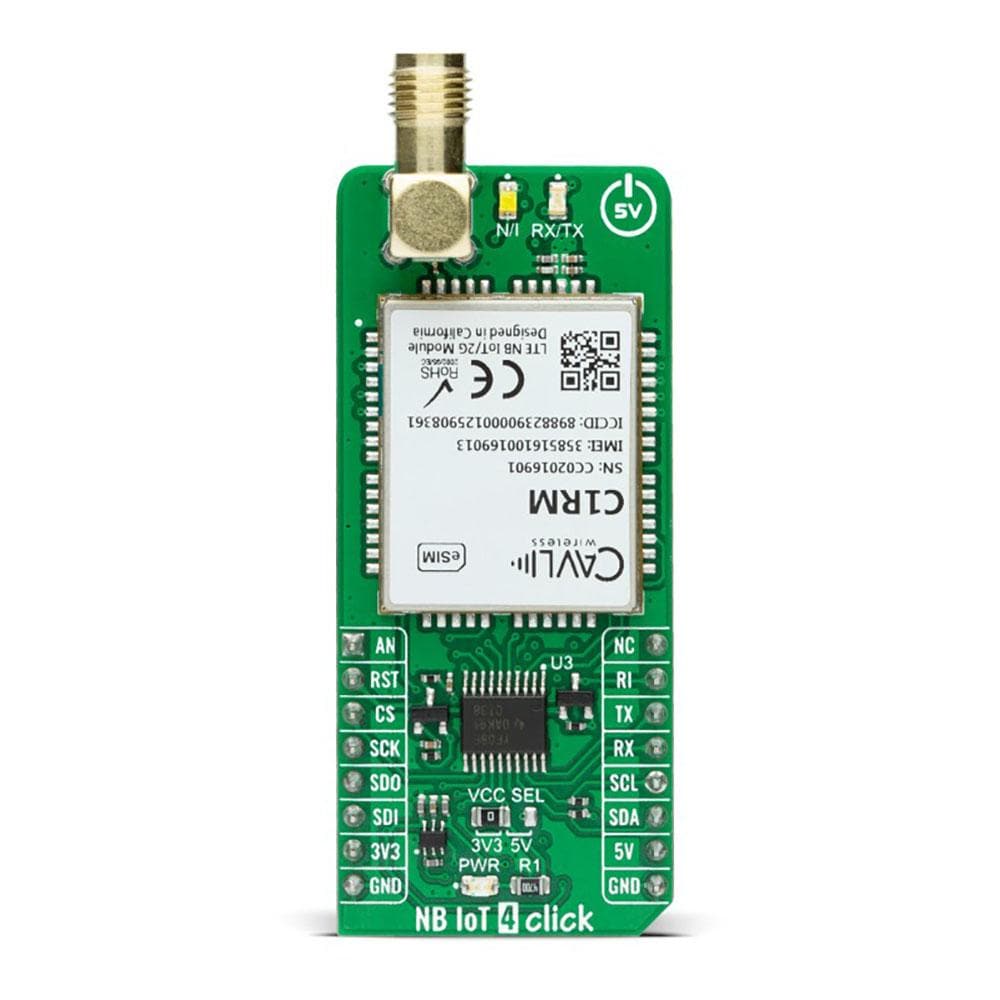
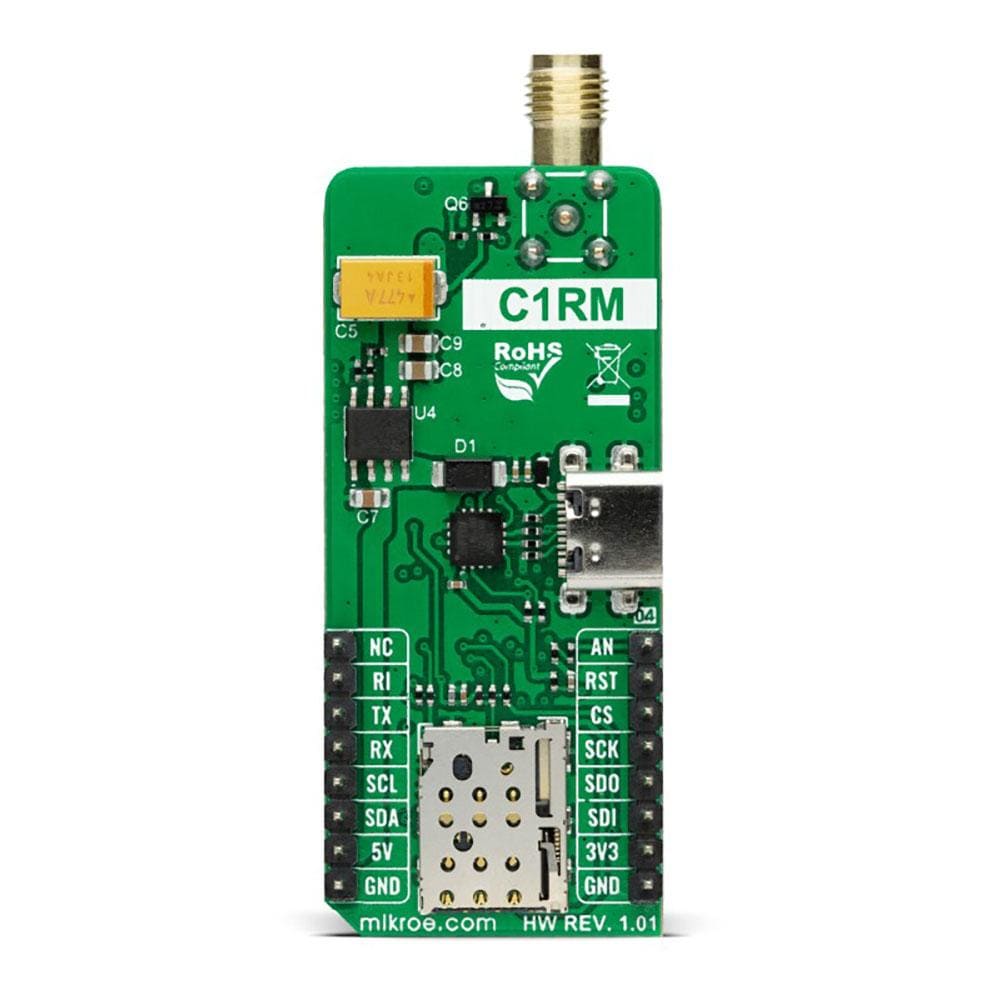
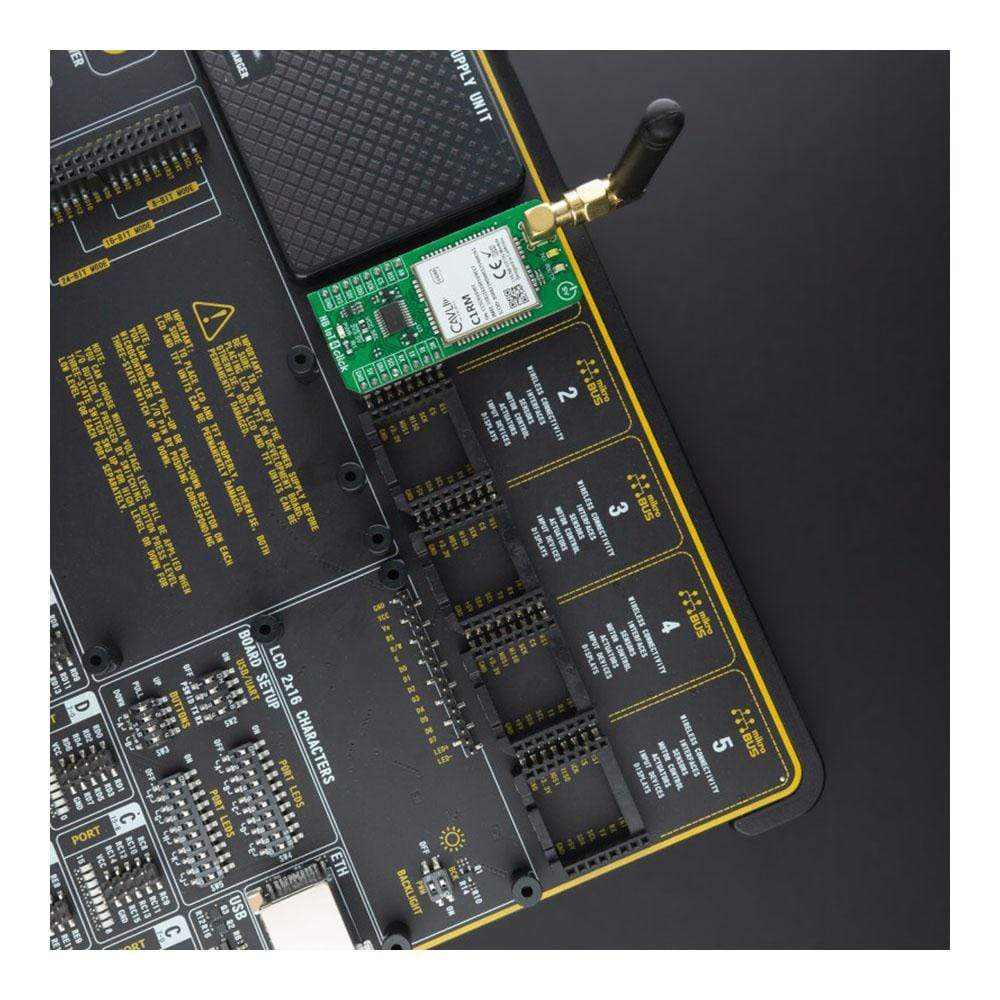
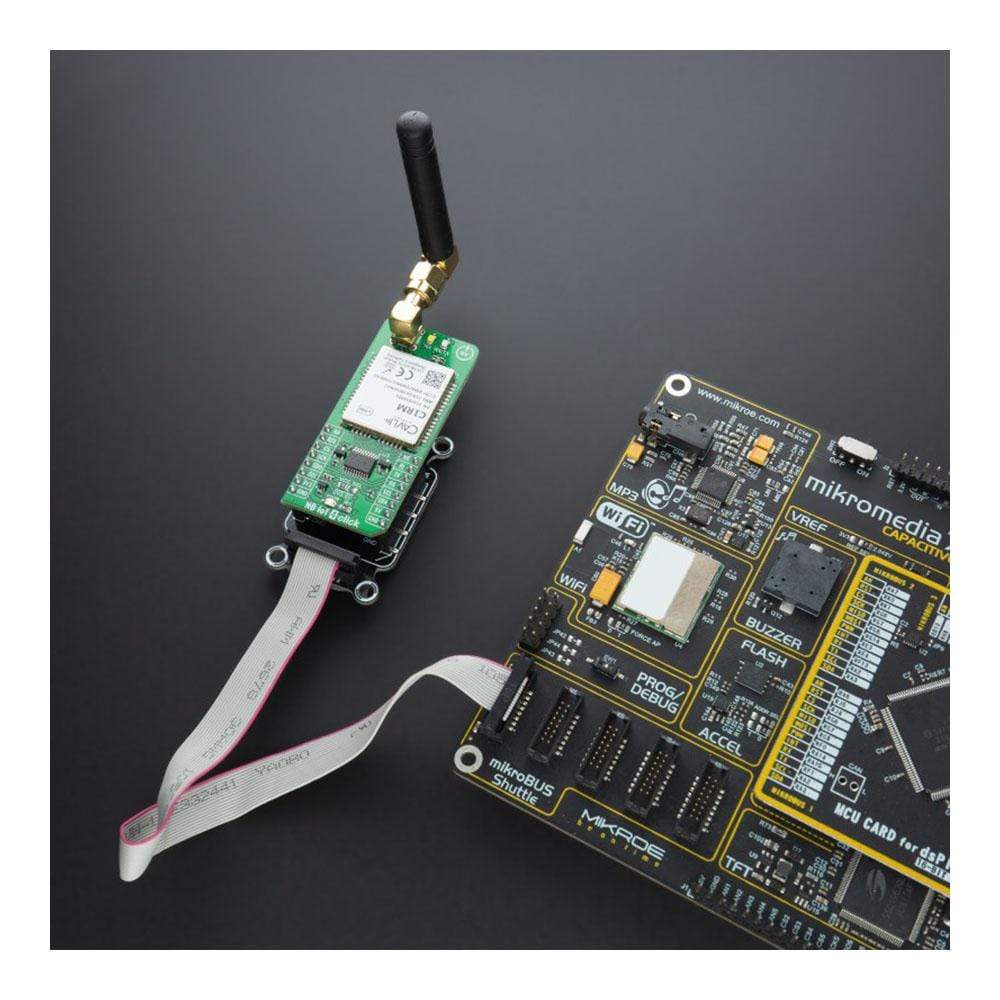
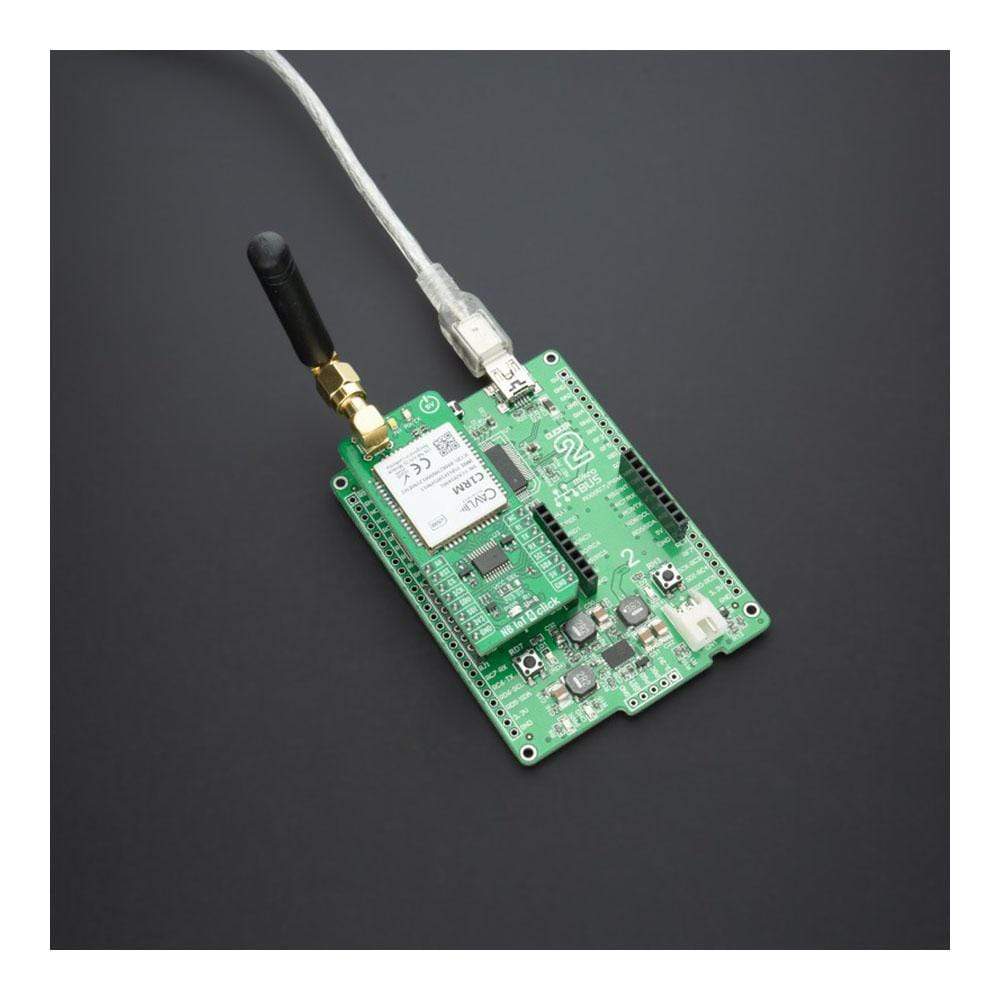
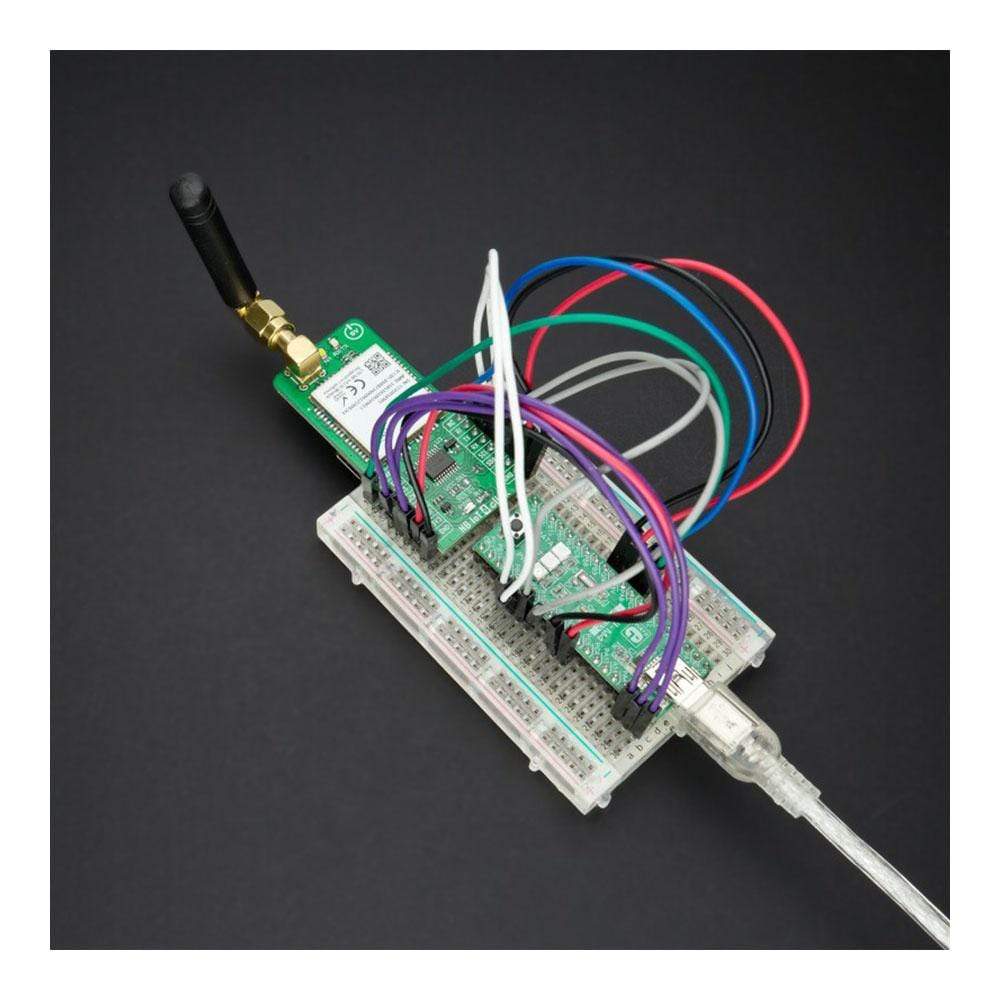
Overview
The NB IoT 4 Click Board™ is a compact add-on board that contains a cellular IoT-based module with integrated eSIM for global data connectivity. This board features the C1-RM, a three-band NB-IoT IoT/2G wireless communication module supporting Band 3, 5, and 8 mainly applied to low power data transmission service from Cavli Wireless. The module also supports the 3GPP Release 13 standard and meets almost all M2M requirements because of its ultra-small size. It uses low-power technology with a Standby power consumption of less than 1mA, where deep sleep mode can be as low as 5uA. It also offers external interfaces, protocol stacks (providing great convenience for your applications), and a complete range of SMS and data transmission services to meet client-side demands.
The NB IoT 4 Click Board™ is suitable for many IoT applications, such as smart metering, intelligent wearables, security and asset tracking, home appliances, environmental monitoring, and more.
Downloads
Le Carte NB IoT 4 Click Board™ est une carte complémentaire compacte qui contient un module cellulaire basé sur l'IoT avec eSIM intégrée pour la connectivité des données mondiales. Cette carte comprend le C1-RM, un module de communication sans fil NB-IoT IoT/2G à trois bandes prenant en charge les bandes 3, 5 et 8 principalement appliqué au service de transmission de données à faible consommation de Cavli Wireless. Le module prend également en charge la norme 3GPP Release 13 et répond à presque toutes les exigences M2M en raison de sa taille ultra-petite. Il utilise une technologie basse consommation avec une consommation d'énergie en veille inférieure à 1 mA, où le mode veille profonde peut être aussi faible que 5 uA. Il offre également des interfaces externes, des piles de protocoles (offrant une grande commodité pour vos applications) et une gamme complète de services SMS et de transmission de données pour répondre aux demandes côté client.
Le NB IoT 4 Click Board™ convient à de nombreuses applications IoT, telles que les compteurs intelligents, les appareils portables intelligents, la sécurité et le suivi des actifs, les appareils électroménagers, la surveillance de l'environnement, etc.
| General Information | |
|---|---|
Part Number (SKU) |
MIKROE-4769
|
Manufacturer |
|
| Physical and Mechanical | |
Weight |
0.02 kg
|
| Other | |
Country of Origin |
|
HS Code Customs Tariff code
|
|
EAN |
8606027383847
|
Warranty |
|
Frequently Asked Questions
Have a Question?
Be the first to ask a question about this.

